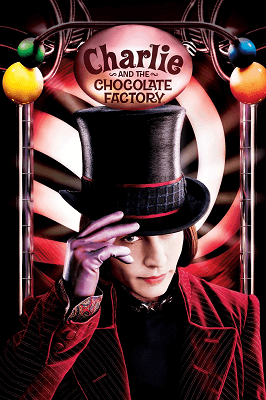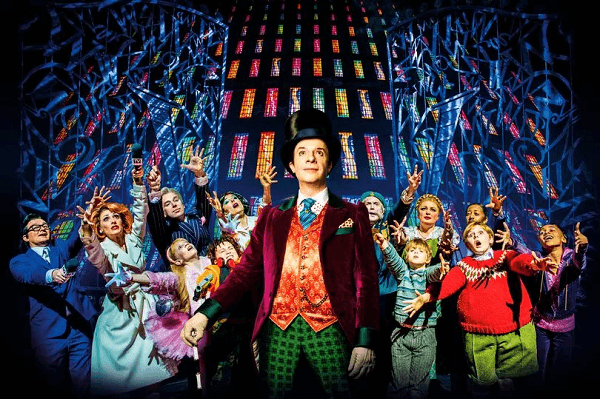Charlie And The Chocolate Factory SummaryIntroductionThings are either nice or terrible in Charlie and the Chocolate Factory, and Dahl assigns goodness to something by making it little. For instance, Charlie is malnourished and petite. Charlie is pitied by the crowd as he waits outside the factory due to his little stature and vulnerability. The first description of Mr. Wonka emphasizes his little size. Mr. Wonka is also described as being tiny. Chocolate bars are also compact. Those who do not take the time to observe small things may easily undervalue them. The potential significance of Charlie, Mr. Wonka, and chocolate bars is considerably more than one may think. 
Despite a sad exterior, Charlie has the inner power to outlive the other kids and eventually take over the chocolate industry. Despite being little, Mr. Wonka has incredible power and strong energy. He has the authority to grant desires and decide the futures of children. All of Charlie's aspirations are contained in a single chocolate bar. Charlie discovers the golden ticket within and is shocked by how powerful something so seemingly insignificant?like himself?can be. About The Author: Roald DahlRoald Dahl was a well-known British writer of children's books and short tales, a poet, and a decorated fighter pilot during World War I (13 September 1916 - 23 November 1990).More than 300 million copies of his novels have been sold globally. "One of the greatest storytellers for children of the 20th century" has been said about Dahl. Born to wealthy Norwegian immigrants in Wales, Dahl lived much of his life in England. He served in the Royal Air Force (RAF) during the Second World War. He graduated to the position of acting wing commander after being a fighter pilot and then an intelligence officer. With books for both children and adults, he gained notoriety as a writer in the 1940s and went on to become one of the best-selling authors in the whole world. He received the 1983 World Fantasy Award for Life Achievement and the 1990 British Book Awards Children's Author of the Year honors for his contributions to literature. Dahl was ranked 16th on The Times' "The 50 Greatest British Writers Since 1945" list in 2008. According to Forbes, he was the highest-paid deceased celebrity in 2021. The celebrated creator of "Charlie and the Chocolate Factory," Roald Dahl, had a certain combination of traits that came through in his written creation. Let's examine the outstanding qualities of Roald Dahl that are eloquently captured in the synopsis of the tale.
Genre Of The ChapterThe "Charlie and the Chocolate Factory" chapter falls under the category of children's literature or a children's novel. Due to its innovative and whimsical writing, approachable characters, and themes that connect with young readers, Roald Dahl's book is widely regarded as a classic in children's literature. It blends fantasy, adventure, and humor to provide kids with a compelling and enjoyable story. But the book's ageless appeal has also attracted a sizable adult readership, making it a well-liked work that transcends decades. About The Genre The children's literary work "Charlie and the Chocolate Factory" captivates young readers with its inventive and fanciful tale. It belongs to the fantasy genre and carries readers away to a fantastical world full of magic and enchantment. The narrative has an adventurous tone as Charlie travels on an exciting tour inside the enigmatic chocolate factory. The narrative is filled with Roald Dahl's signature humor, making it a fun and engaging read for both kids and adults. Underneath the surface, the book delves into significant moral and ethical issues, imparting insightful lessons on kindness, honesty, and the negative effects of greed. Overall, "Charlie and the Chocolate Factory" is a beloved classic in children's literature because of the genre combination of fantasy, adventure, humor, and moral investigatio. SummaryThe main character of the book, Charlie Bucket, is a little boy who lives with his parents, Mr. and Mrs. Bucket, as well as both sets of grandparents (Grandma Georgina, Grandpa George, Grandma Josephine, and Grandpa Joe), who spend their whole lives sleeping on the one bed the Buckets can afford. The Bucket family is quite underprivileged since Mr. Bucket is the only one who has a job. They eat just cabbage and potatoes and reside in a small, draughty two-room home. Charlie's daily trip to and from school is excruciating since he has to pass Mr. Wonka's chocolate factory on each route. Charlie wants chocolate more than anything in the world. Charlie's grandparents read him stories every night. Grandpa Joe once told Charlie a story about Mr. Wonka and his candy factory. Mr. Wonka is a brilliant inventor; for an Indian prince, he once created a castle made entirely of chocolate. Locals used to work at his plant until Mr. Wonka abruptly closed it down because spies were stealing his candy formulas. The plant unexpectedly reopened after being closed for a number of years and started producing. Since the gates are always sealed and Mr. Wonka and his factory are completely enigmatic, nobody knows who works there. A newspaper containing the joyful news that Mr. Wonka has buried five Golden Tickets in five Wonka candy bars is brought home by Mr. Bucket one evening. The kids who discover the Golden Tickets will get to visit his factory. Within a few days, two kids?the obese Augustus Gloop and the opulent, spoilt Veruca Salt?discover two Golden Tickets. Soon after, on Charlie's birthday, he receives a Wonka bar, but it is missing a ticket. In the following weeks, a kid called Mike Teavee who is preoccupied with watching television and a girl named Violet Beauregarde who chews gum both discover tickets. According to the Bucket family, the four kids who discovered the tickets are all awful. Charlie receives a saved penny from Grandpa Joe to purchase another Wonka bar in the hopes of finding a Golden Ticket, but the bar is empty. The subsequent months saw the Bucket family begin to go hungry. The winter is very cold, making it challenging to stay warm. To make matters worse, Mr. The Bucket gets fired from the toothpaste plant. Charlie later discovers a $1 cash in the gutter one day after school. This enables him to purchase food for his family, but he chooses to purchase a Wonka bar for himself first. The bar is entirely made of chocolate, but Charlie discovers a Golden Ticket when he purchases a second bar. Grandpa Joe gets out of bed for the first time in 20 years when Charlie informs his family. The family decides that Grandpa Joe will go with Charlie on the factory tour tomorrow. The following morning, Charlie and Grandpa Joe see the other ticket winners from a distance as their parents hold them back to prevent them from scaling the gates. The gates are finally opened and they are led inside by Mr. Wonka. He guides them inside his chocolate-themed chamber, which has the appearance of a stunning landscape. The meadows, the trees, the broad, raging chocolate river?everything in the underground room?is delicious. The group is next introduced to Mr. Wonka's employees, the Oompa-Loompas, knee-high residents of Loompaland. After learning that the Oompa-Loompas lived in constant peril in Loompaland and couldn't get their hands on the one item they craved: cacao beans, which is what chocolate is made of, Mr. Wonka persuaded them to work at his factory. They enjoy singing, and they frequently chuckle. As avaricious Augustus Gloop starts to sip from the chocolate river and then falls in, Mr. Wonka interrupts his explanation. Enormous glass pipes suck him up, but Augustus hardly fits. While other Oompa-Loompas sing the other kids a song criticizing Augustus for his greed and weight, some Oompa-Loompas lead Augustus's parents to locate him and save him from being turned into fudge. After the song is over, Mr. Wonka leads the group into a candy-filled boat. They rush down the chocolate river to Mr. Wonka's hidden Inventing Room. He displays his in-progress sweets, which include gum that serves as a three-course meal for the person chewing it. Despite his warnings, the gum-chewer Violet Beauregarde can't help but steal it from Mr. Wonka. She enthusiastically likes the first two meals, but when it comes time for dessert, she becomes blue and swells up like a blueberry. While some people sing a song about how bad it is to chew gum constantly, Oompa-Loompas wheel her away to juice her. 
Literary Devices Used In The ChapterRoald Dahl uses a number of literary techniques in the chapter "Charlie and the Chocolate Factory Summary" to improve the storyline and draw readers in. Let's examine a few prominent literary techniques that were applied in this chapter:
In "Charlie and the Chocolate Factory Summary," Roald Dahl crafts an engrossing and absorbing tale via the employment of several literary techniques. The chapter is an intriguing and memorable read because to the use of imagery, simile, metaphor, exaggeration, metaphor, alliteration, irony, foreshadowing, and symbolism that enhance the storytelling, create emotions, and leave a lasting impression on readers.
Next TopicCharlotte's Web Summary
|
 For Videos Join Our Youtube Channel: Join Now
For Videos Join Our Youtube Channel: Join Now
Feedback
- Send your Feedback to [email protected]
Help Others, Please Share









